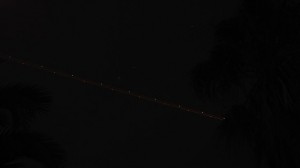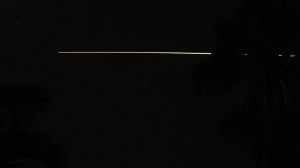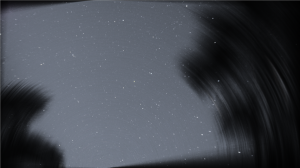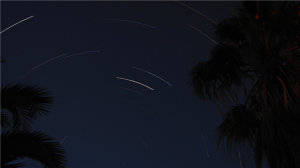Interesting Tech Projects
Astrophotography and CHDK
CHDK is an alternative firmware for many Canon cameras, particularly point and shoot and I previously wrote about it here. One of the nice features is the ability to take continuous pictures for long periods, which makes taking photographs of the night sky possible with a low cost camera.
Here are my first experiments to see what is possible. I am fortunate to live in a place where the light pollution isn’t so bad and there are over 300 sunny days a year.
I set my Canon A480 up to take continuous 30 second exposures pointing roughly north, around 45 degrees above the horizon. I left it for about one and a half hours, during which time it took 155 pictures. I used ISO 80 and the auto focus set to infinity.
During the picture taking period I took a couple of “dark” shots. This is where the lens is covered with a cap while the picture is being taken. Astrophotography software can use these to reduce the sensor noise. Generally the more the better so next time I will take more dark shots.
When I looked at the pictures they were mostly what I expected with two exceptions shown below. The first one was an aircraft. I’m not sure what the second one is – it might have been the Police helicopter.
There are three things we can do with the set of pictures:
- Stack them into a single enhanced view of the sky showing many stars
- Show the motion of the planet with star trails
- Generate a time lapse movie
Using Deep Sky Stacker the pictures can be combined into a single picture showing all the stars. This a sophisticated program that is also free:
Notice that the palm trees in the foreground are smeared. This is a product of how the picture was stacked to eliminate the movement of the stars. As you can see there are a lot of stars that were captured.
Using a program called Startrails, also free, the images can be stacked in a different way to show how the stars appeared to move across the sky during one and a half hours:
The stars appear to move counterclockwise, and you can see from this image that they decreased in brightness through the evening. This was because of some high altitude haze that moved in.
Finally here is a high definition movie of the sky. It’s best to watch it in a dark room. It was created using FFmpeg as I described previously.
| Print article | This entry was posted by Andy on June 7, 2010 at 8:07 pm, and is filed under Photography. Follow any responses to this post through RSS 2.0. Both comments and pings are currently closed. |
Comments are closed.



